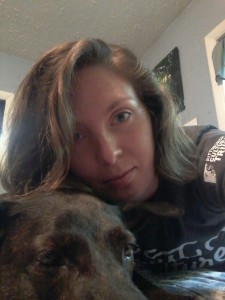Published in Vol. XXXVI, no. 1, John Beardsley’s poem “Pastoral” is reviewed by an editor of Mid-American Review.
As we enter Beardsley’s “Pastoral,” we take from the simple and familiar title a sense of impending rural comfort. The compendium of our experience with the pastoral rushes forward and leaves us anticipating a romantic exploration of rural life and landscape.
We then are given the first line of this “Pastoral,” in “The snow sang like a shot,” and immediately know that there is a complexity here. Our attention is called to a dominating feature of this landscape, the snow, which seems to live so fully and joyously that it sings, but like a shot. The juxtaposition of the staunch violent noise of a gun firing with the purity of a living, singing snow leaves the reader fascinated about this world, this pastoral, in which the violent and the beautiful can exist in such magnificently direct proximity.
Beardsley continues to develop his initial image by crafting the snow into an all encompassing entity that “sunk all it could see / into its curves and blued / barrels…” The snow takes the underlying forms of the pastoral landscape and makes them its own, adopts them into its own intimate contours. But this pastoral snow is as willing to reveal as it is to consume and “gave it out / again blistering.” The snow releases the forms held within it just as strikingly as it takes them in.
Once we find ourselves situated within the poem’s snow capped pastoral body, the speaker of the poem enters, a voyeur over the snow, “looking across it.” The speaker looks through the snowscape “at the long black body / of an animal I cannot / name…” Just as the speaker cannot identify this black creature streaking through the trees, we are left with a blurred image of the animal fleeing from the “shot” through the white gleam of the snowy landscape. The animal “…moved like / a loss a blood through / paper birches.” We are struck again by the brilliant contrast of beauty and violence involved in the image of an obscured animal moving fluidly, “like a loss of blood,” through the trees of the landscape, staining the glistening snow with the ruby traces of its recent wound. The bark of the “paper birches” seems to magnify the contrast of red and white.
Next, we arrive joltingly at a sense of isolation within the snowfield, as “it was talking to itself.” The landscape maintains its sense of life and voice, but now it seems highly personal, as if the speaker of the poem is overhearing the field’s intimate laments. But the speaker is not obtrusive. Instead, they identify with this overhead self-intimacy, identify with the field talking to itself, “as I do at night.”
At this point, we see the speaker and the landscape as two isolated, intimate figures that share a sense of value in the personal voice.
But the speaker must address this bleeding figure that runs through the snow topped, birch-laden woods. This unnamed animal that seems so integral to the scene at hand. “O stranger in the distance,” the speaker announces, “I’ve made you a fetish / of neck-wrung chickens / to keep off our fathers’ / hungering ghosts…” In this shocking moment, the speaker reveals a depth in his sentiment for the distant stranger. The motives and actions of the speaker are brought into question, as well as the history involved in their complex present state.
The obscurity behind the “stranger in the distance” allows our minds to wander, wondering if perhaps the stranger is no longer the wounded animal, wondering if perhaps the stranger is now, to the speaker, something or someone beyond this scene in the snowy woods. We become aware of a depth in the obscurity of the images.
Still, the speaker is engulfed in the interaction of beauty and violence that has so far saturated the poem, as “I bound / their throats in my sawn-off hair.” But again, their internal stance on this interaction is questioned as they cry out, “O god of embarrassment, / god of bullets-in-the-back,” and make a sacrifice to this addressed being, exclaiming that “I give you my teeth, pink / at the root.” They proceed to “Sleep in this lot I’ve dug / where even the snow can’t see.”
We arrive back at the initial image, the all-encompassing snow that has taken every feature of the landscape under its vast white arms, into its body. But not the speaker. The speaker arrives at a point so personal, a point so privately intimate that they sleep “where even the snow can’t see.”
The final line of the poem revisits the ongoing theme of beauty interacting with violence. It weighs the joy of song against the brutality of retrieving that joy from within the core of a conflicted individual, as the speaker proclaims, “I’ll scrape out the song from my lungs.”

